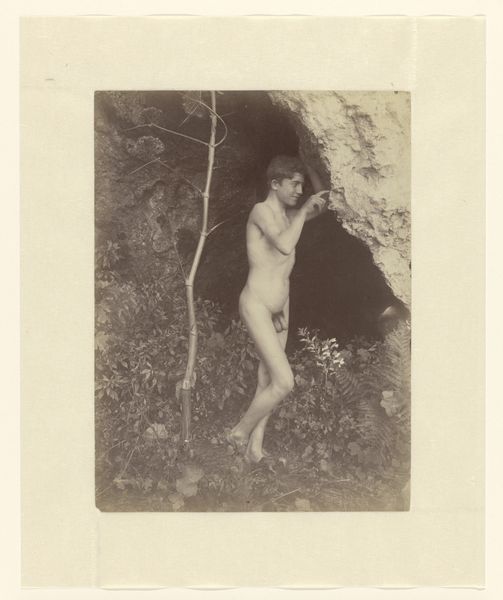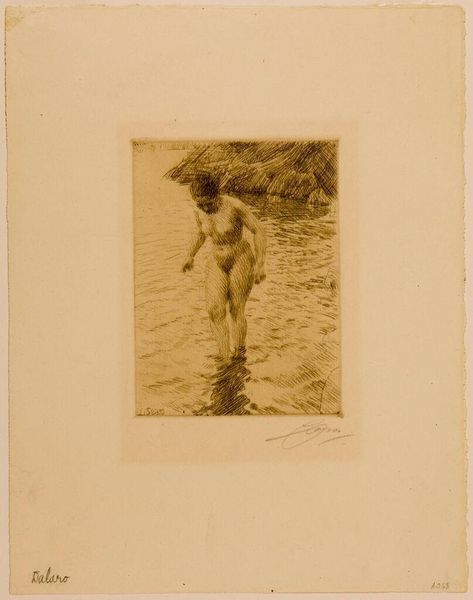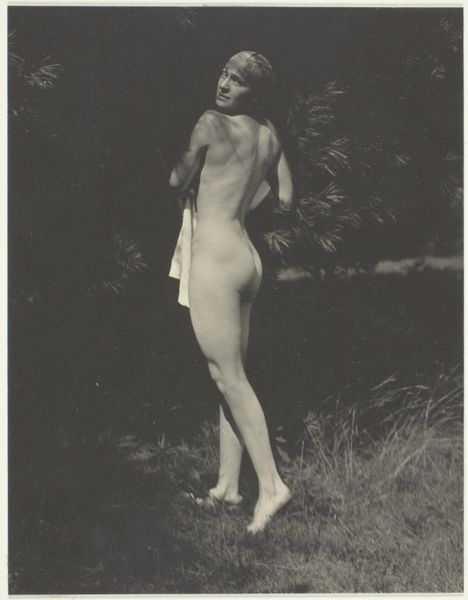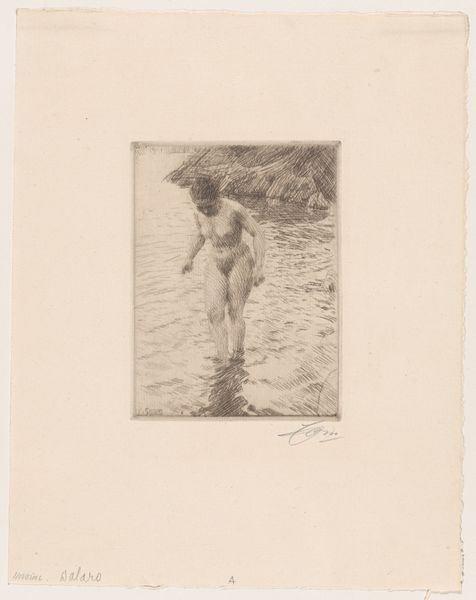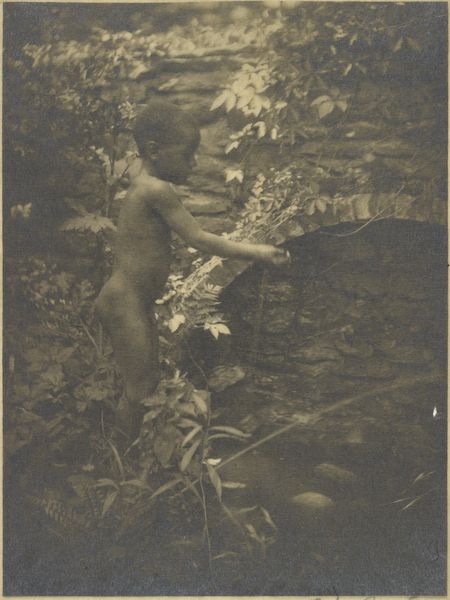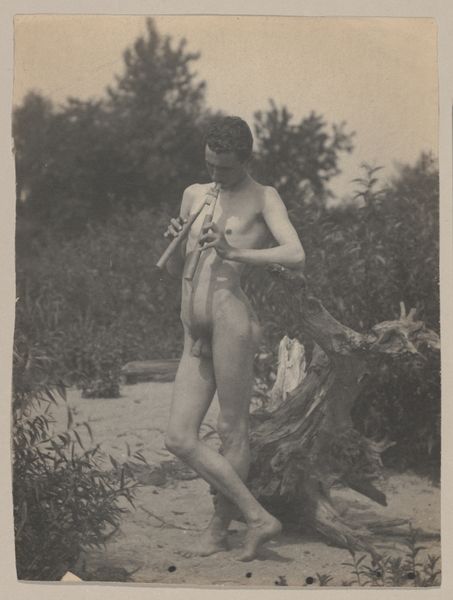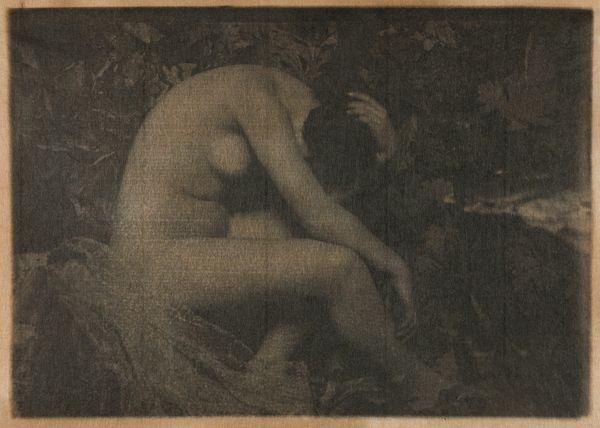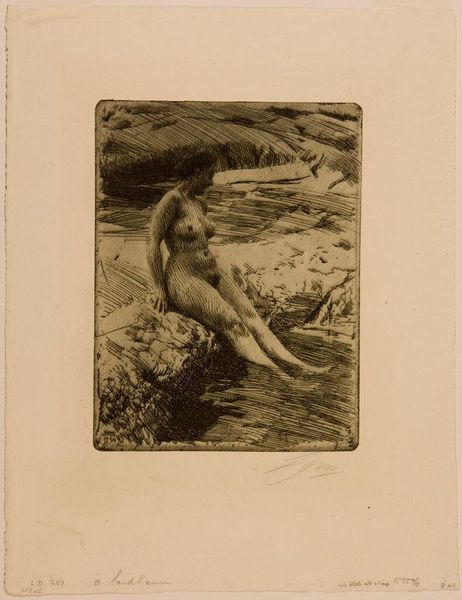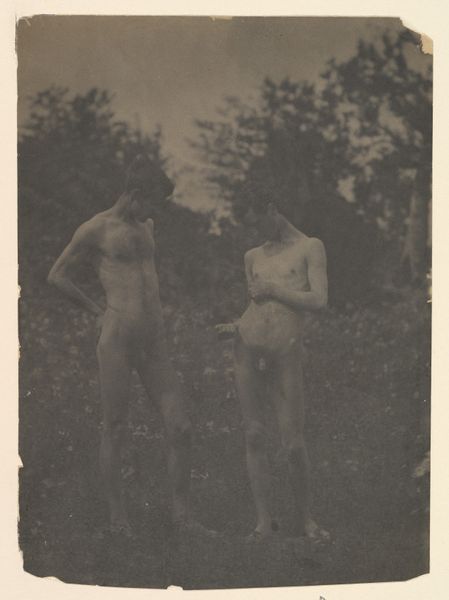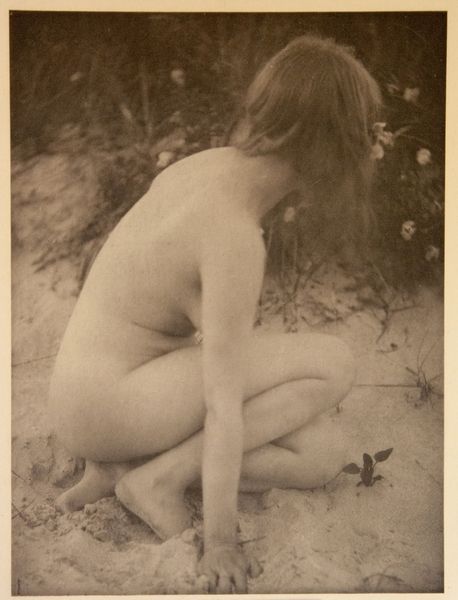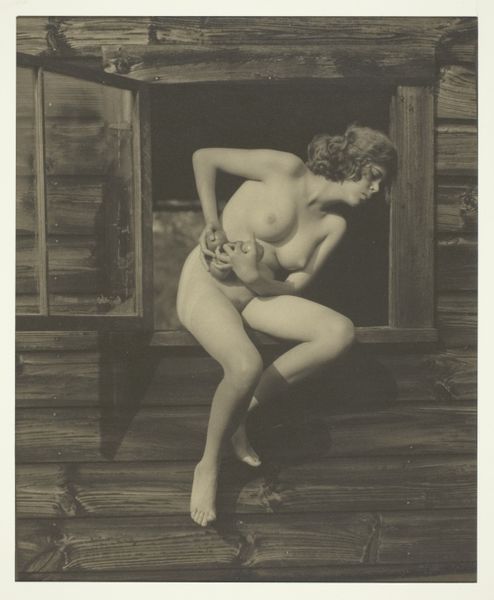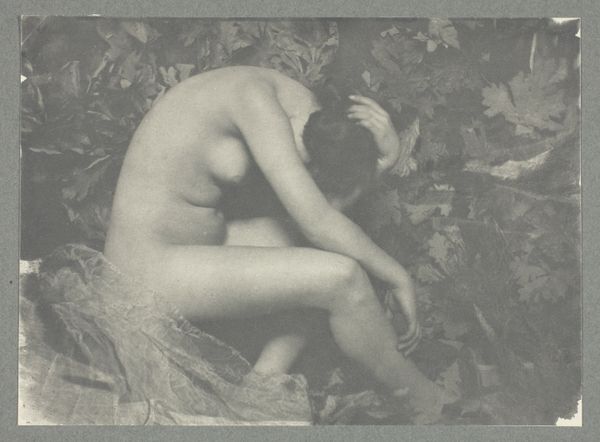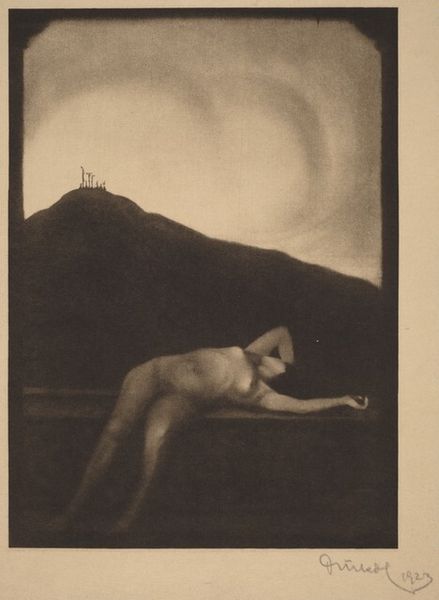
photography, gelatin-silver-print
#
portrait
#
classical-realism
#
charcoal drawing
#
figuration
#
photography
#
female-nude
#
gelatin-silver-print
#
academic-art
#
charcoal
#
nude
#
male-nude
Dimensions: 24.1 x 18.0 cm. (9 1/2 x 7 1/16 in.)
Copyright: Public Domain
Curator: So evocative...it feels like a half-remembered dream. The lighting, especially. Editor: Well, let's ground this dream a little. We're looking at René Le Bègue’s "Académie" from 1902, currently residing here at the Met. It’s a gelatin silver print. Curator: Gelatin silver...right, technically photography, but it possesses this incredible textural depth that mimics a charcoal drawing. Do you sense how soft the transition between dark and light is? Editor: Absolutely. It’s classical-realism in its photographic form. Le Bègue’s playing with conventions; you can sense the echoes of academic figure studies and even how gender has been typically portrayed through painting for so long. Curator: There's a sense of intimacy here that disrupts the rigid poses usually associated with academic nudes. This isn't a heroic figure, is it? Look at the turn of the body. And did he smudge the plate around the figure perhaps? Or manipulate the image, after? The surface looks...active, which lends that haunting vibe I felt instantly. Editor: That blurring of the boundaries speaks volumes. The work exists during the rise of photography as fine art, so it interrogates traditional definitions of beauty and representation by making the medium so tangible. By softening and manipulating the final print, Le Bègue makes explicit a commentary on who, in his time, was actually granted that hallowed artistic license. Curator: It also flips gender norms – even if not consciously perhaps. How many ‘reclining nudes’ in that period were female? Here, it’s an explicitly male nude and by framing it within what was perceived feminine, he breaks those confines of classic, structured academic portraits. Editor: Indeed. We're confronting constructions of masculinity, vulnerability, and the body itself. All those traditional codes of who is “allowed” to be artistic is being challenged by the final result and the method. Curator: Seeing that so vividly makes you re-assess, doesn't it? I keep returning to the eyes, unseen in the shadow. Editor: Yes, the shadows, too. I think that sense of concealed agency is crucial to understanding this. Curator: Exactly. This “Académie" it's less a display, more like a secret. That transforms everything for me, personally. Editor: For me too, considering the moment it’s challenging, questioning its own nature as photograph and as art, opens the door to the complexities of its subject matter.
Comments
No comments
Be the first to comment and join the conversation on the ultimate creative platform.
